Tuesday 11th to 18th September 2018 – Luganville, Espiritu Santo Island, Vanuatu
Vanuatu had probably been our favourite place in the South Pacific and although there were many more islands yet to explore we were both feeling rather homesick after seven months away and were also concerned that Hugh’s 95 year old father had deteriorated. We decided that we would head across to Australia and get a flight back to the U.K. as soon as possible and perhaps next year we could come back and see some of the islands further north which are less visited by tourists and yachts.
We needed to check out of Vanuatu from Luganville, the capital town of the next island north, Espiritu Santo. It was an easy day sail there from Malekula island, with a gentle breeze filling our cruising chute rather beautifully, and by late afternoon we dropped anchor amongst a group of other yachts in front of the Beachfront Resort.
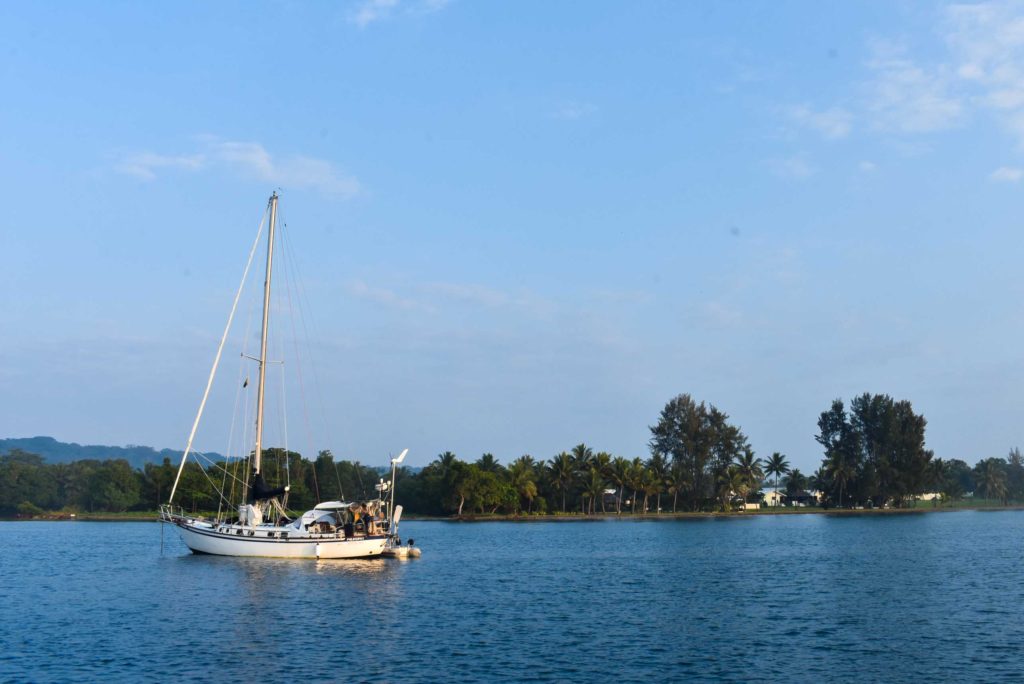
One of our priorities before we left Vanuatu was to dive the wreck of the SS President Coolidge, a luxury ocean liner that served as an American troopship during WWII. She had been carrying troops from San Francisco to Espiritu Santo but rather unfortunately her captain, Captain Henry Nelson, was unaware that only a month earlier a minefield had been laid to protect the harbour at Luganville – this had inexplicably been left off the information on his passage plan. When the ship struck two mines the captain attempted to run her aground, so allowing 5,340 men from the ship to wade ashore with only two casualties. The ship now lies with her bow at a depth of 21 meters and her stern at 73 meters, and has been named as one of the top ten wreck diving sites in the world.
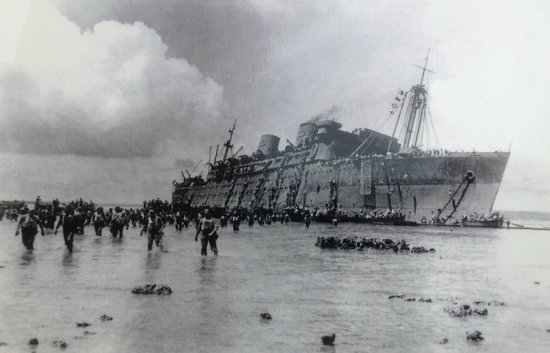
We booked a couple of dives with one of the dive shops, Allan Powers. On the morning of the dive we were collected with all our gear from the Beachfront Resort and taken to the site. It was a shore dive and we waded out with Paul our dive master to the Coral Gardens where I was mobbed by hundreds of small fish then swam deeper to the bow of the wreck.
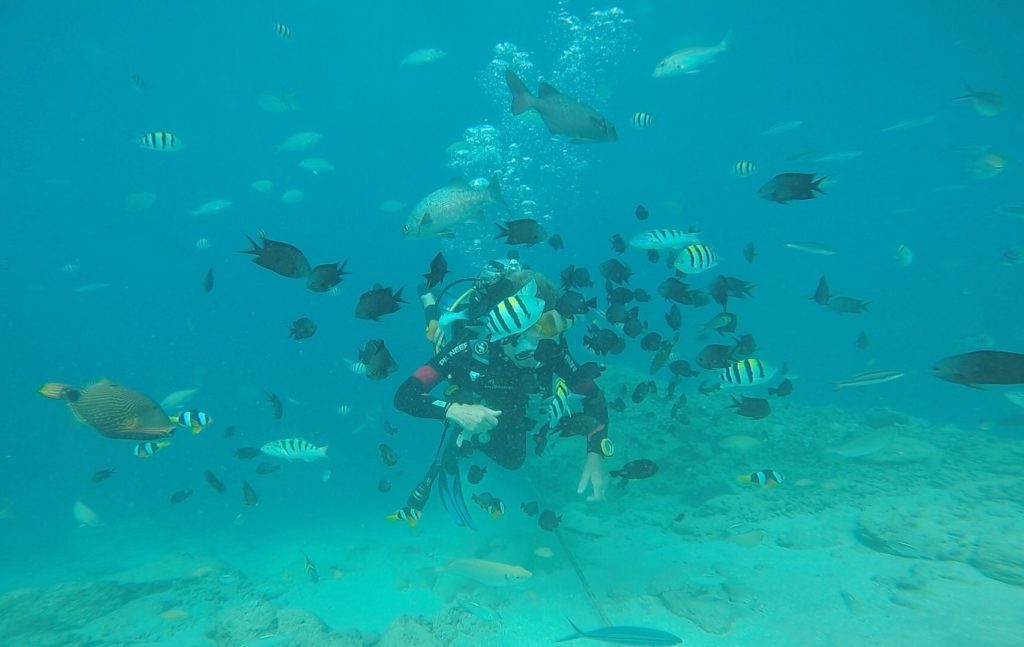
The massive ship stretched away and down, covered with soft and hard corals and disappearing into the silty water as it lay on the sloping seabed. Paul showed us the anchor locker and we swam into and around two holds on the foredeck where there were still army trucks and a military tank. He put an old helmet on his head and clowned around then pointed out brass shell casings as well as crockery, plates and bottles. Inside one of the holds was an electric clam, a strange orange creature which flashes electric blue lines. This dive was to 33 meters with the usual 5 minute decompression stop on the way back up.
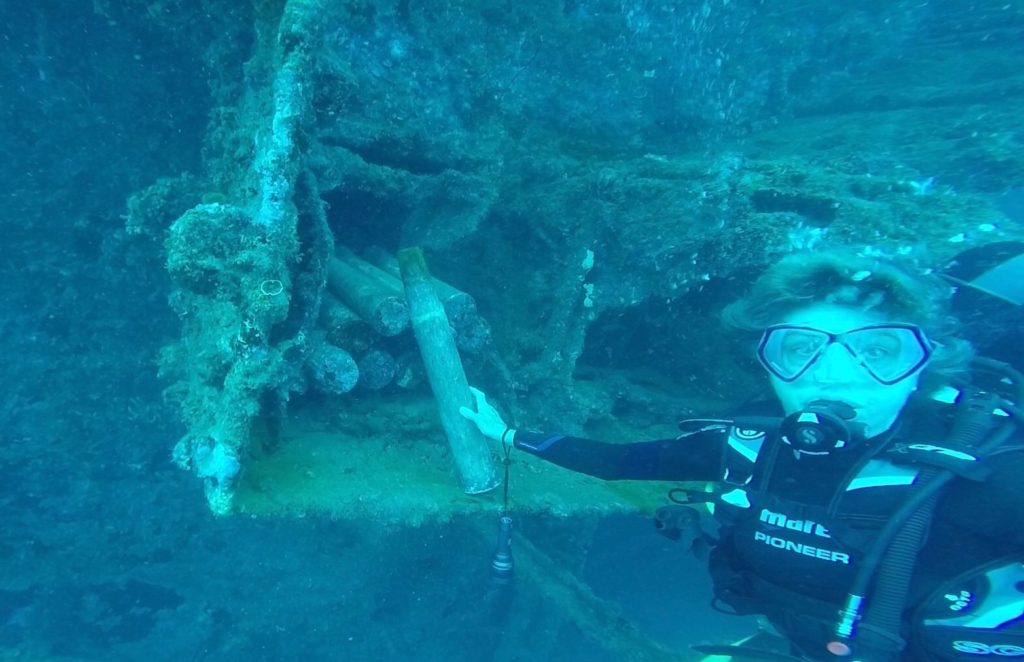
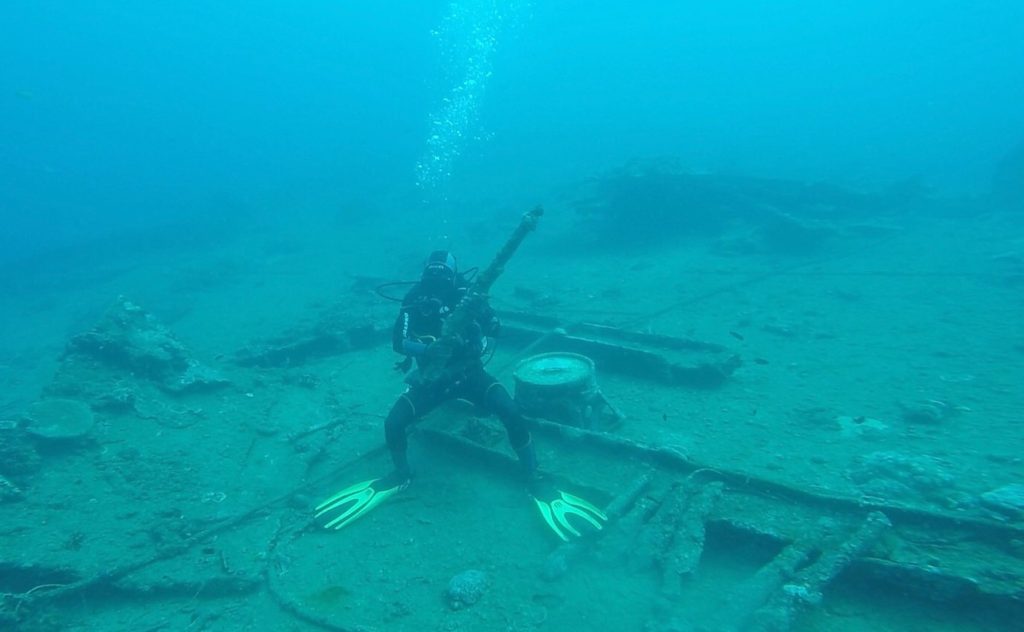
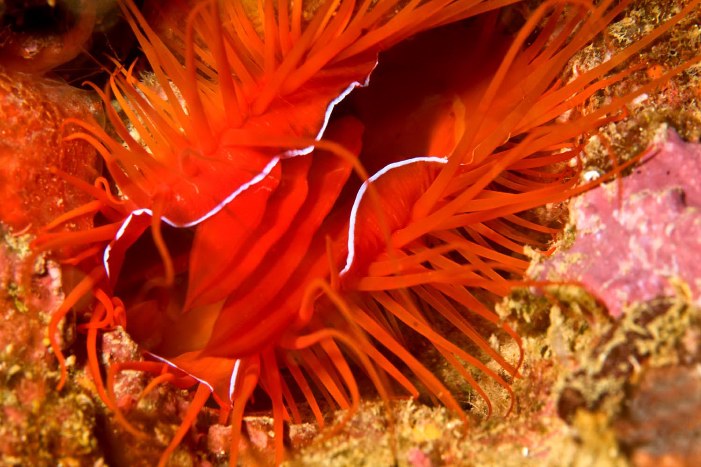
The following day we had arranged a second and deeper dive on the wreck, particularly to see ‘The Lady’, a porcelain relief of a lady riding a unicorn which is in the first class passengers’ lounge smoking room at 45 meters. Hugh doesn’t do diving in confined, dark spaces (other than the odd cave that is less claustrophobic than a narrow corridor on a ship 40m down – H) and after seeing the pitch black corridor extending away towards the estate rooms and meeting Monty, a huge moray eel, coming in the opposite direction, we decided to give this one a miss and instead admired the huge emerald green hard corals covering the hull of the ship with reef fish swimming amongst them.
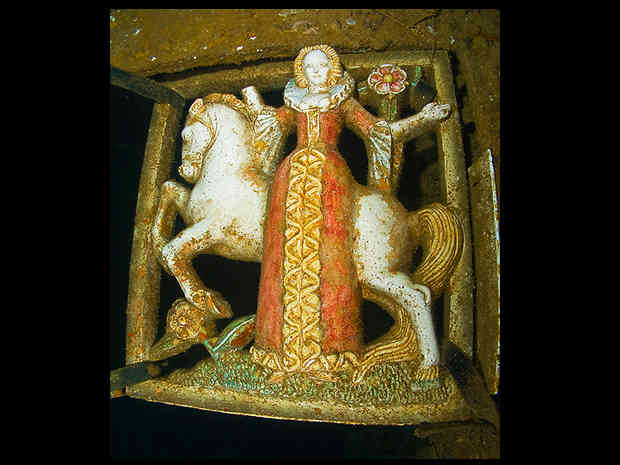
Seeing this wreck is a reminder of part of the Second World War that we had been less aware of, played out in the Pacific Islands and particularly on Vanuatu and the Solomon Islands between the Americans and the Japanese. The New Hebrides, as Vanuatu was known before Independence in 1980, was a staging and supply post used by the American forces – the setting for the book South Pacific and subsequent musical of the same name.
There is another dive/snorkelling site a few miles along the coast at Million Dollar Point. At the end of the war the Americans were left with masses of military equipment that they offered to sell to the French and British who held joint sovereignty over the island. When they declined to pay up, assuming the Americans would have to leave it behind and they’d get it for free, millions of dollars worth of trucks, jeeps, bulldozers, tractors, boxes of clothing and cases of Coca-Cola were dumped in the sea to form a spectacular dive site.
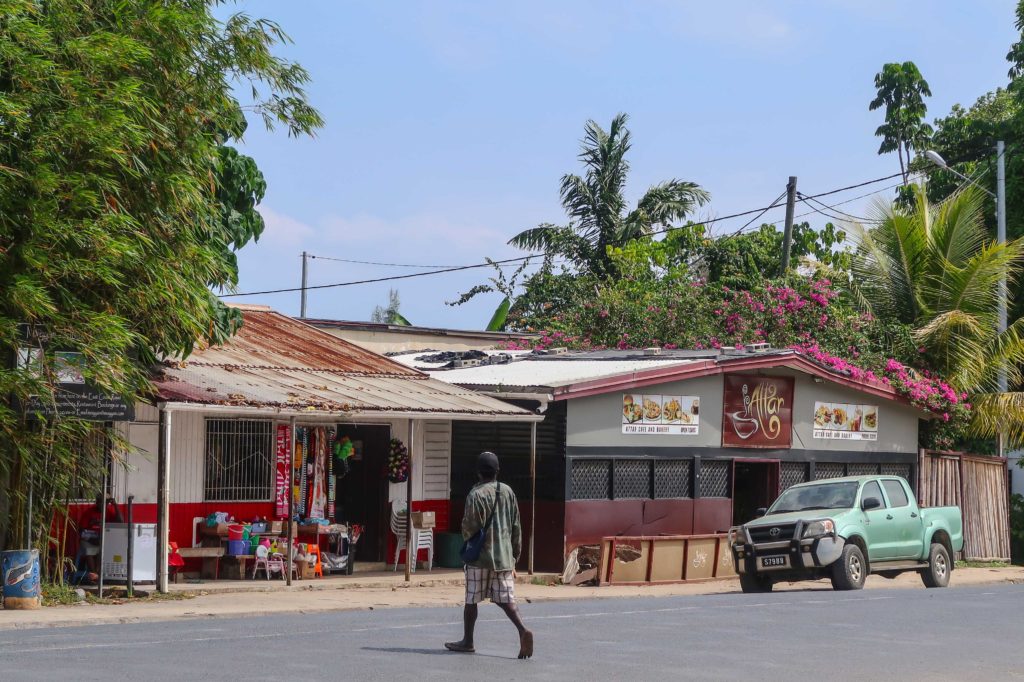
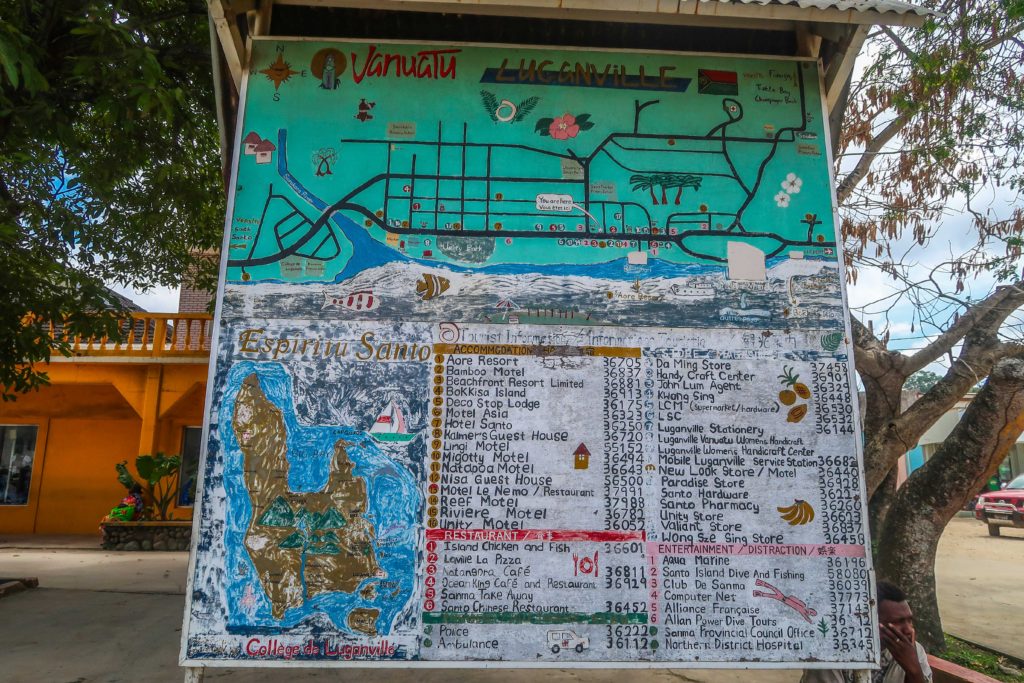
We spent a week anchored by the Beachfront Resort, with trips into Luganville to re-provision, fill diesel containers and to buy souvenirs of woven fans and bags. We made several dinghy trips to shore with 20 litre bottles for tap water to refill Vega’s tanks. Time also to relax, use the restaurant and pool at the resort and to socialise with some of the friends we’d made along the way. It would have been good to have had time to see more of the island of Santo but we were keen to get to Australia and home so took the opportunity of what appeared to be a good weather window to set off. We planned to stop at Huon and Chesterfield Reefs on the way, both reefs owned by New Caledonia. Although we had applied to the correct department over two months earlier our permission had still not come through, so would we be risking arrest or significant fines by stopping without official authorisation? We hoped not.
Tuesday 18th to Thursday 27th September – the 1000 mile passage from Vanuatu to Australia
We were up at 6am and left on a still morning, motoring out across the dead calm water and using the last of the Digicel credit on our phone to book our flights home from Brisbane.
As we reached the open sea the wind came up and we were soon getting over 25 knots of wind with waves across the beam, Vega crashing through the waves with speeds of 7 to 8 knots, an uncomfortable, rolling sail. As the day progressed it became clear we were not in for the gentle passage that we’d expected. By night the wind was howling with big seas, the occasional massive wave breaking over the boat and filling the cockpit with water. We were both exhausted by the next morning and relieved as, over the next few days, the conditions gradually eased and our bodies adjusted to being on passage again.
After two days at sea we passed near to Huon Reef but decided not to stop as the anchorage there wasn’t sufficiently sheltered for such strong winds, so pushed on to Chesterfield Reef, a further two days sail away. Conditions continued to improve and the third night was glorious and moonlit, the sky radiant with stars after the moon set at 3am. We were racing along at 6 knots – great sailing.
By the fifth day the seas were building up again, the winds gusting to over 30 knots, and it was a relief when at last we approached Chesterfield Reef where we could stop for a few days in the shelter of the lagoon. We were overjoyed to see that there was already a yacht, Ansoba, at anchor. We had met Alex and Wendy at the Beachside Resort in Luganville and they later told us they were equally thrilled to see us approaching. It is comforting to have company when in a lonely reef over 400 miles from the nearest safe harbour, especially in bad weather.
The water in the reef was a perfect turquoise as we dropped anchor in a sandy patch amongst the coral bommies and near to Ansoba. There were hundreds of birds wheeling above the sandy islets. The islands are nesting grounds to terns, boobies and gannets and I had high expectations, having read about how unafraid of humans the birds are, and was looking forward to going ashore to see birds nesting on the beach. I was also hoping to snorkel and dive to see reef sharks, turtles and sea snakes, perhaps even humpback whales. I felt excited and privileged to be in such a remote place in the world that only a handful of people visit each year.
We tried to get the dinghy launched but in the strong wind and choppy swell it reared and bucked making trying to lower the outboard motor onto it a dangerous exercise. We were unable to get ashore and the following day conditions were not much better. Ansoba left and we were alone. We debated whether to risk trying to get across to the island but knew that if the outboard packed up we wouldn’t be able to paddle back to Vega against wind and tide and would most likely be swept away towards Papua New Guinea, a mere 700 miles. Despite my massive disappointment I had to admit it was probably not the best idea, so, after two nights at anchor and no improvement in the weather anticipated, we left without setting foot on shore.
From Chesterfield it was another four days of sailing to Bundaberg and we had company. One night a large seabird landed on the sprayhood and crapped profusely over it, ignoring me as I yelled at it and eventually managed to push it off from underneath. After circling around Vega a few times, eyeing us up for a more suitable perch, it landed on the railings where it hung on overnight. The next night a red footed boobie chose to roost on our lifebuoy. It preened for a while, completely unperturbed by all the activity in the cockpit right next to it as we rushed around putting a reef in the mainsail, merely giving us a scornful glance before putting its head under its wing and going to sleep for the night. Soon after dawn it preened itself again, checking each individual wing feather carefully, then took off without a backward glance, swooping low over the waves presumably looking for breakfast.
Most mornings we would do a round of the decks to chuck any flying fish back overboard, their little corpses stiff and dry. We’ve never actually eaten one and are told they’re rather bony.
On the 9th day we finally crossed the shipping lanes around Australia, calling up a couple of cargo ships which were getting a bit close. A pod of dolphins joined us in Hervey Bay and as I stood at the bow to greet them three sped away and leapt into the air in unison. In the distance humpback whales were breaching and spouting. Welcome to Australia!
Thursday 27th September to Friday 12th October – Australia
It was late afternoon by the time we entered the Burnett River and called up the marina, to be told to anchor in the river overnight as we couldn’t enter Australia without being first processed by the Australian Border Force and Biosecurity. The next morning we were allocated a berth at the marina only being allowed to step on shore to secure our lines. Promptly Rebecca from Biosecurity/ Quarantine arrived and questioned us about the boat, our health, where we’d been and what food we had on board, looking through our fridge and bagging up our food waste to be burnt. She also took various seeds, including nutmeg and mace, that I’d collected in the Caribbean. Meanwhile Lee and Kelly from the Australian Border Force went through the immigration procedures. They were all perfectly charming despite a probably outdated reputation for being fierce and unfriendly.
We had bought a large wooden tamtam drum in Vanuatu and after getting it back to Vega had spotted a half dozen 1mm bore holes in it. Knowing how strict Australian Biosecurity are about wanting to prevent the introduction of alien species into the country, particularly termites (and we certainly didn’t want them on board either), we had emailed Biosecurity in advance for advice and wrapped the ‘lump of wood’ in several layers of polythene. To cut a long story short the lovely Rebecca took the tamtam away, still securely wrapped up, to put into their deep freeze for four months while we are home. I just hope this kills not only any termites but their eggs too.
Over the next two weeks we cleared out Vega, polished all her chrome, took the sails down to be left at the local sailmaker for checking and repair. Hugh visited the local hairdresser in Burnett Heads for a sorely needed haircut and beard trim (see earlier photos) and we got to know Alex and Wendy from Ansoba over seafood platters and a few bottles of wine. Hugh was thrilled to see a family of ‘roos on the walk over to the nearby town of Burnett Heads.
They celebrated the Queens Birthday on 1st October in Queensland which we thought was hilarious – not that we saw any particular celebrations but it’s a good excuse for a day off work.
The marina is a 30 minute drive from the town of Bundaberg through fields of sugarcane. Mention Bundaberg to an Aussie and they think of Bundaberg Rum and possibly Bundaberg ginger beer. Bundy has Bourbong Street with double story buildings dating from the 1870s but otherwise appears a rather dull, sprawling place.
Apart from visiting the Woolworths and ALDI supermarkets we made an excursion to the Botanic Gardens and the Hinkler Hall of Aviation, Bert Hinkler being a pioneer inventor and aviator from Bundaberg who made the first solo flight from England to Australia in 1928 taking 15 days. He is a bit of a local hero and when ‘Mon Repos’, the house he had built in Southampton in the 1920s, was due to be demolished a group of aviation enthusiasts here paid for it to be brought back, brick by brick, and rebuilt in the Botanic Gardens.
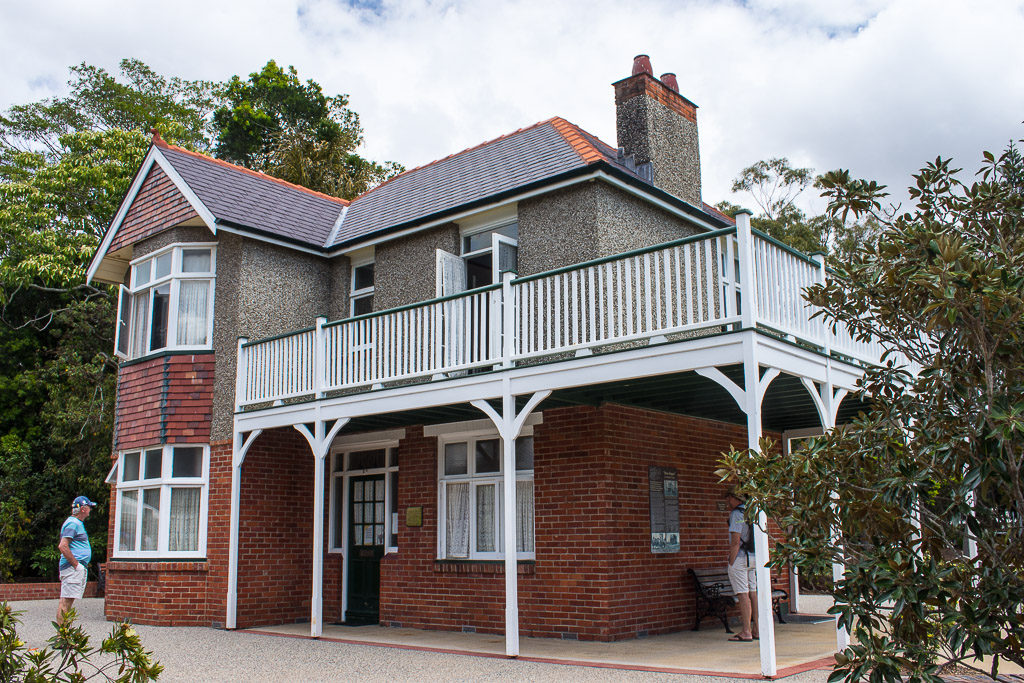
On October 9th we motored Vega round to the hoist where she was was lifted out of the water to go into the storage yard. A few hours later we were on the train to Brisbane, some four hours south, where we spent three nights in an airBnB, before flying home via Singapore. We liked Brisbane, a modern, vibrant city built along the Brisbane river. We stayed in the West End, an up and coming area with a great selection of ethnic restaurants and caught the CityCat along the river to the South Bank with its galleries and outdoor swimming pool.
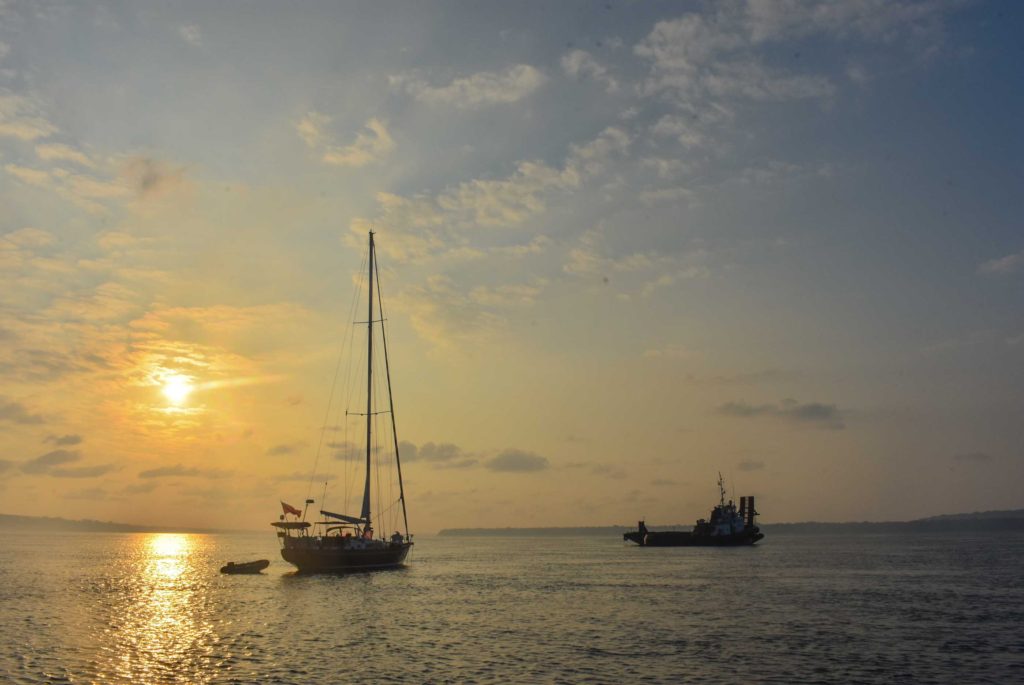
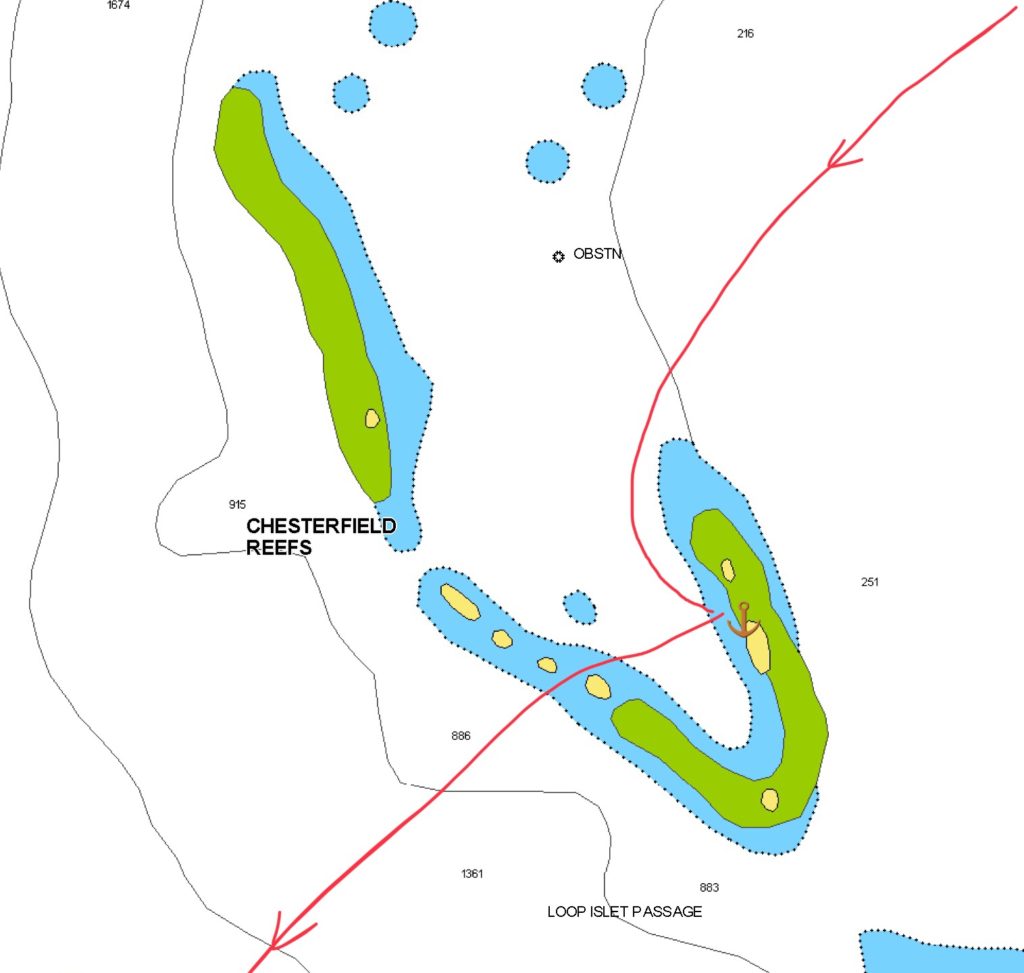
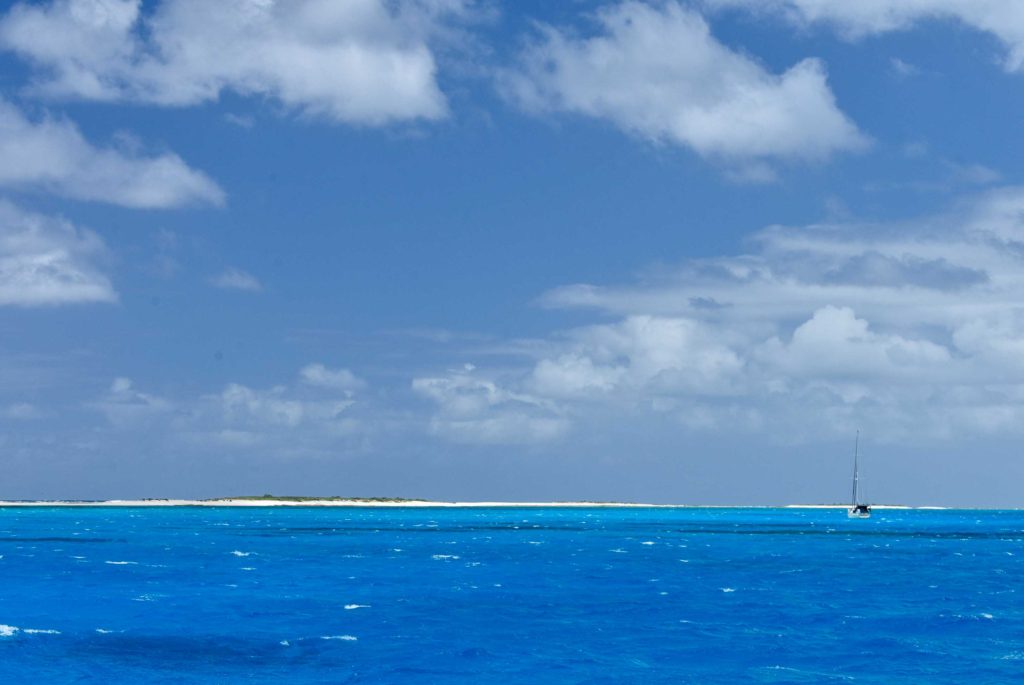
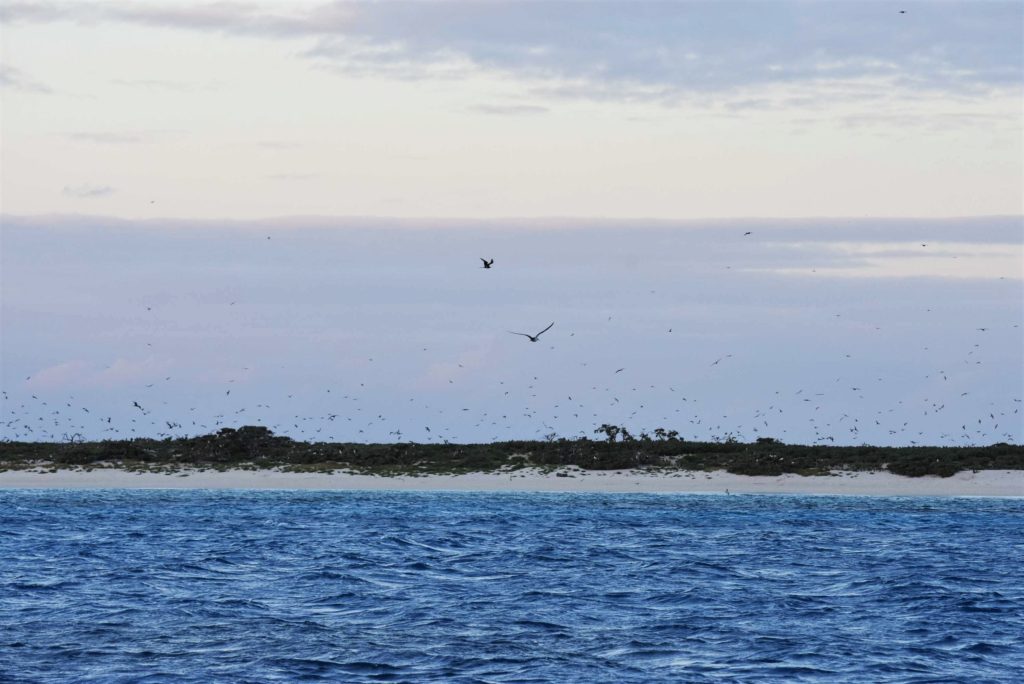
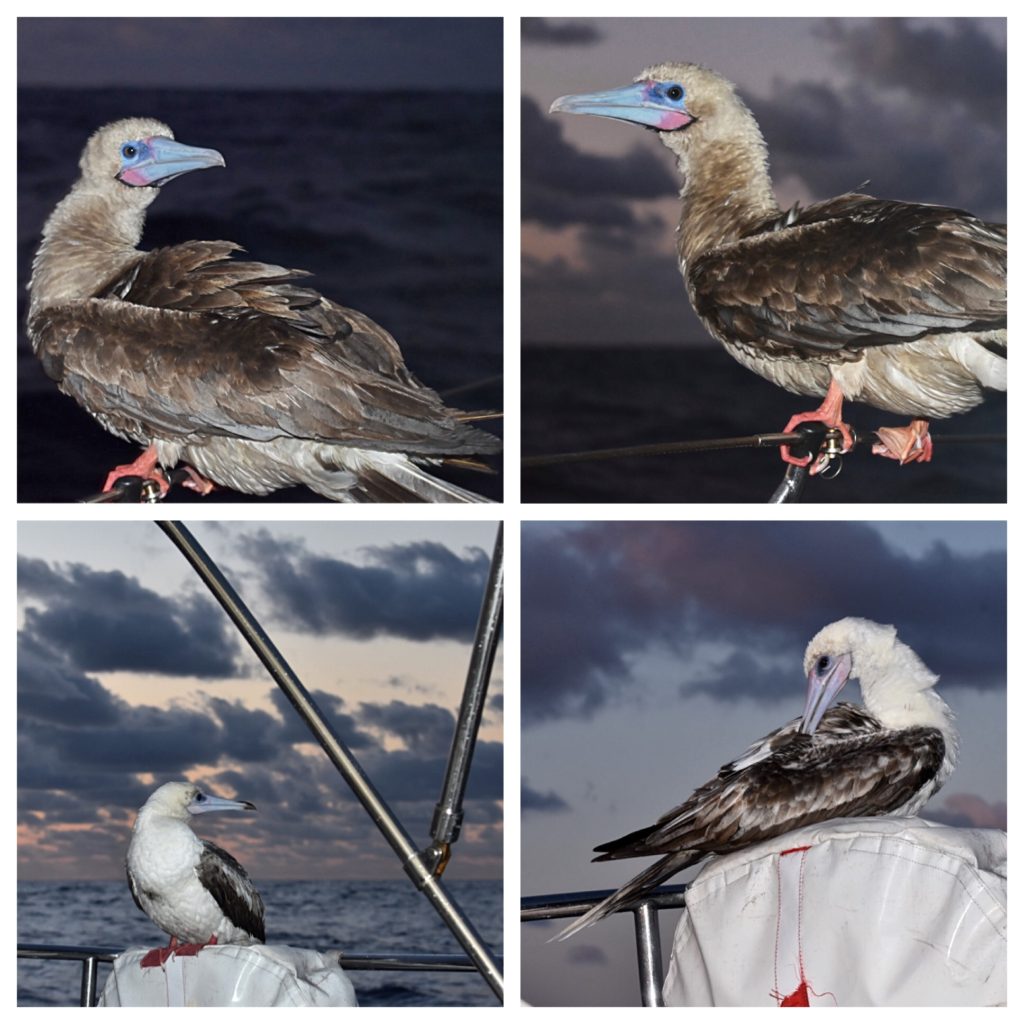
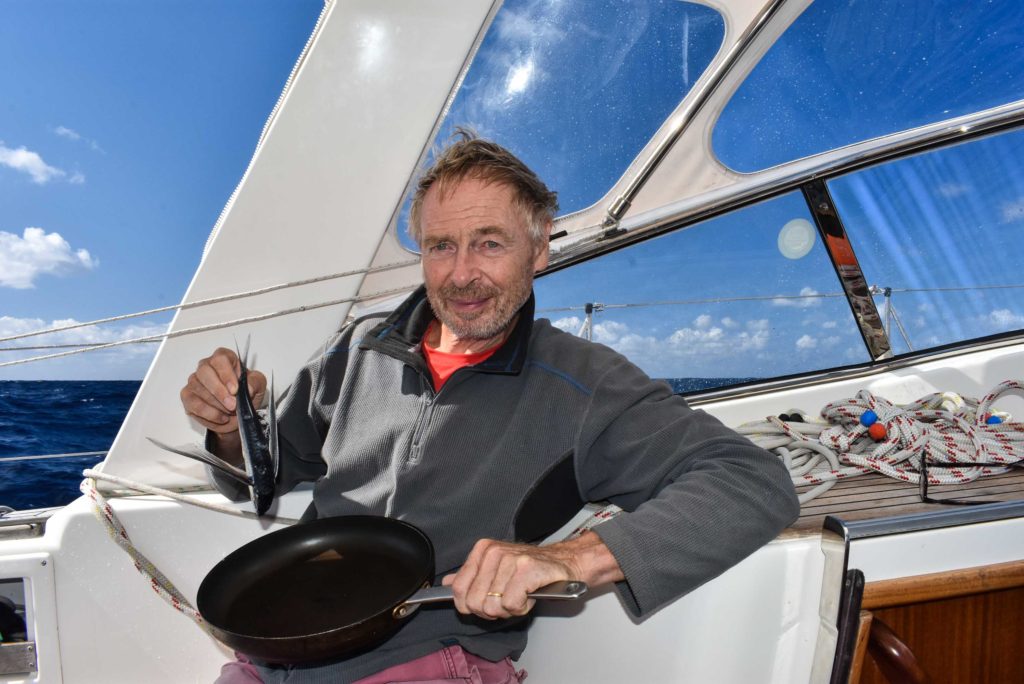
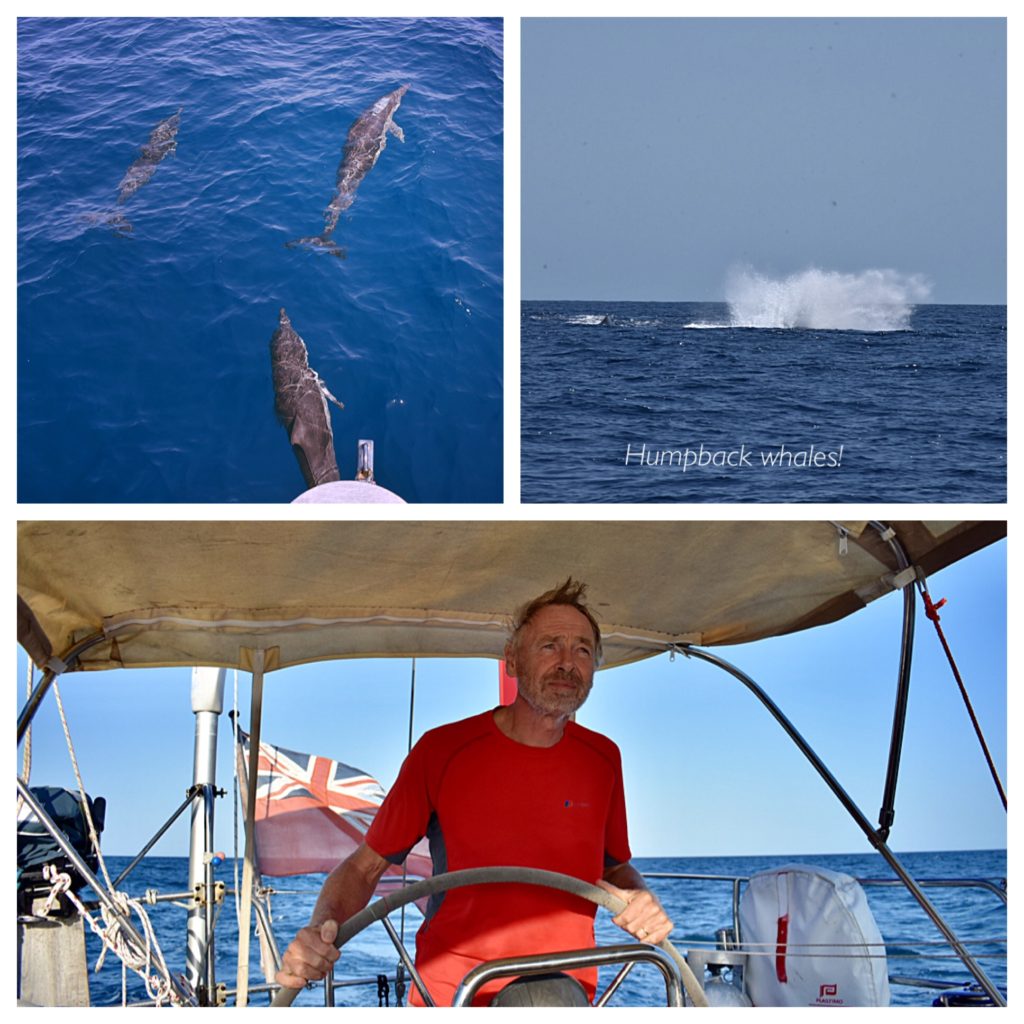
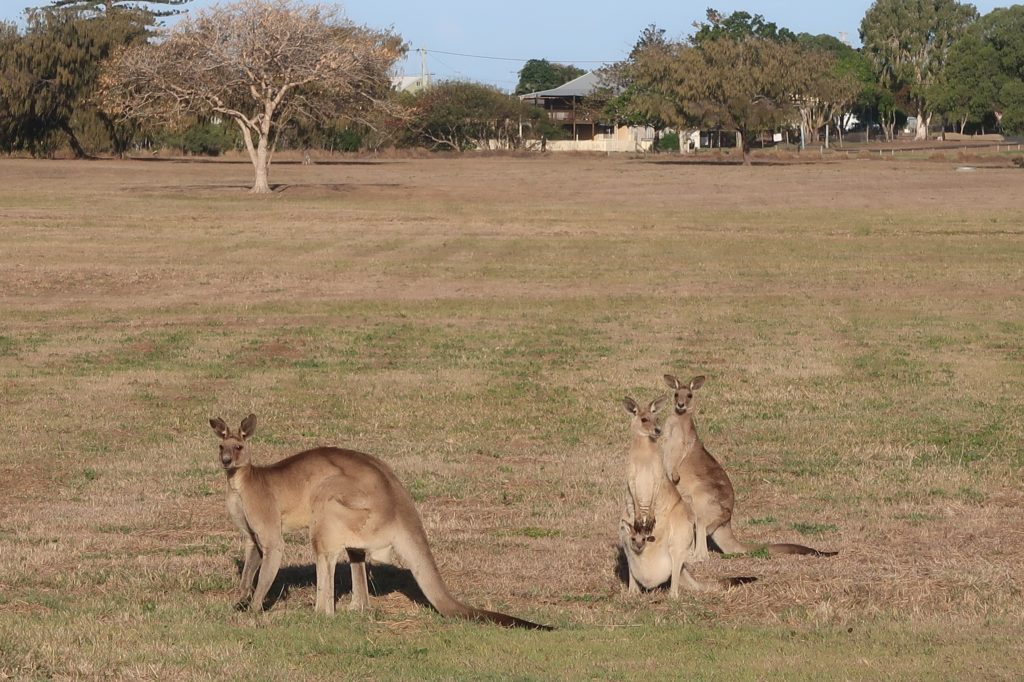
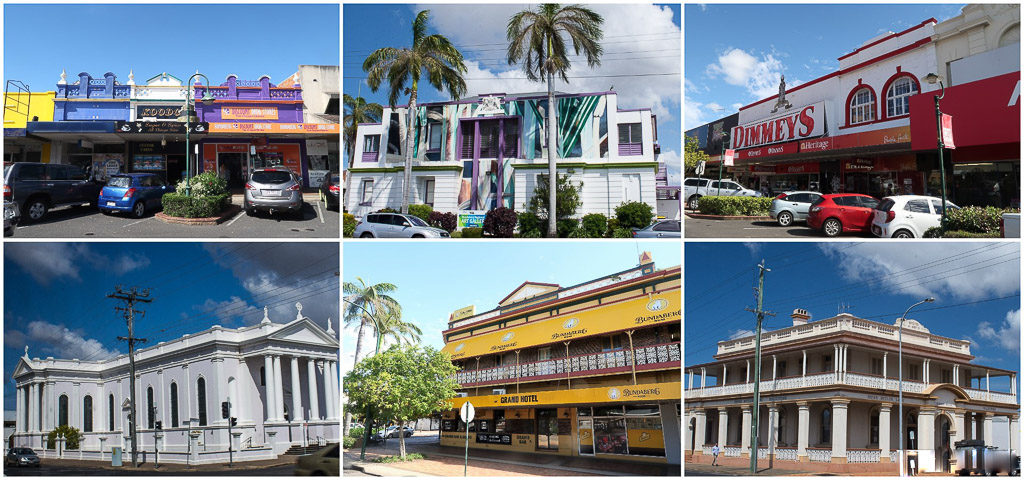
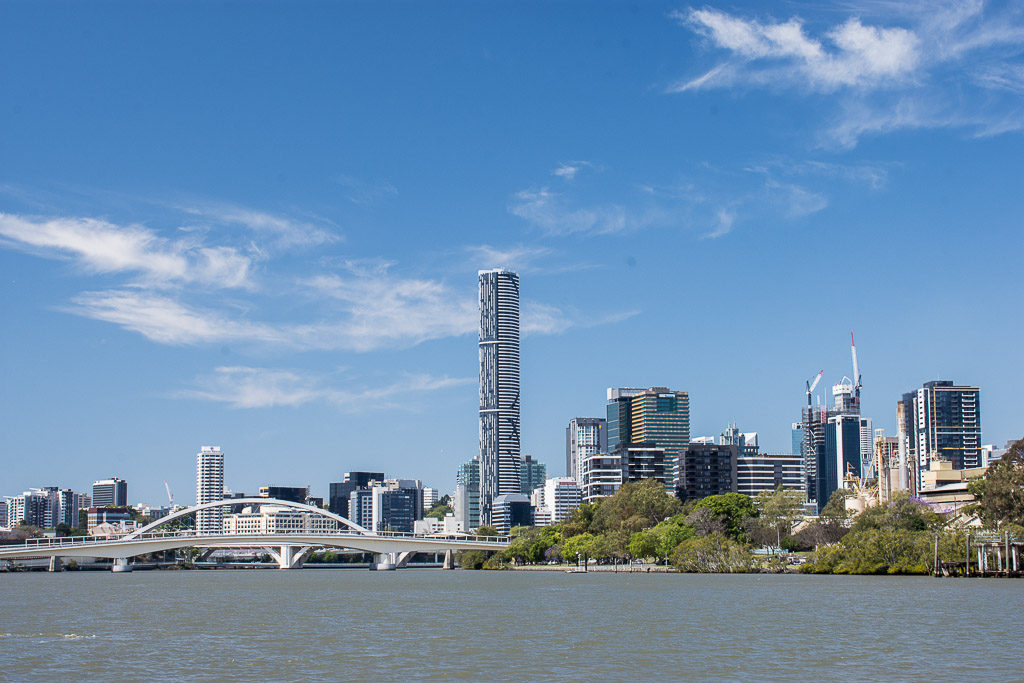
10 Comments
Nina and Ben
April 21, 2019 - 6:58 amFascinating reading as always. Keep it coming xx
annie
May 14, 2019 - 10:07 pmThanks… one day I’ll get it up to date. Or will I? xxx
Amanda Love
April 21, 2019 - 7:13 amWonderful and hairy in equal measure!! It’s Easter here and I have just hidden eggs for my girls to find when they wake up!!
annie
May 14, 2019 - 10:06 pmA belated happy Easter ? xxx
Ken Dolbear
April 21, 2019 - 9:15 amSo good to have these up-dates of your adventures. Ken.
annie
May 14, 2019 - 10:05 pmAnd it’s great to hear from you Ken xx
Annie Sparkes
April 21, 2019 - 1:01 pmAnd how is Hugh’s dad?
annie
May 14, 2019 - 10:05 pmHe’s doing much better in the nursing home, thanks xx
Paul Bayley
April 25, 2019 - 6:34 pmWow sounds a bit of a frightening crossing to Oz, I take my hat off to you.
annie
May 14, 2019 - 10:08 pmThanks Paul
It wasn’t a very pleasant crossing, but these long passages often aren’t, especially in these seas.